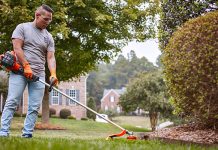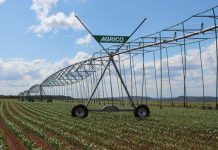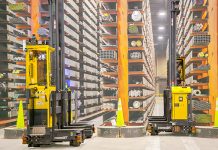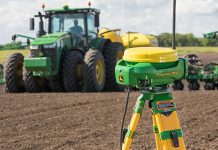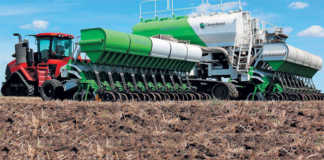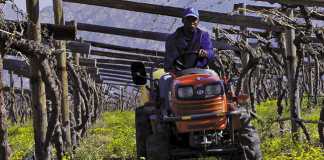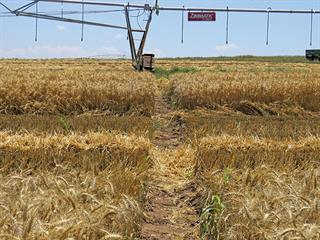
A stuck or slipping pivot unit wastes water and compounds the problems associated with wet clay soils. Rotating auto-aligning flotation tracks (RAAFT), imported by Mascor, keep the pivot on top of the soil, moving forward and irrigating efficiently. They also reduce the stress on the drive train, protect the tyres and dramatically increase flotation.
RAAFT are manufactured from a high-grade, UV-protected polyethylene/carbon composite polymer. Water cools, cleans and lubricates the polyethylene, so the wetter the conditions, the longer the life of the joints and bearings. Moreover, the hardware that secures the bearings is stainless steel, so corrosion is never a problem.
With RAAFT, it is no longer necessary to harvest in the direction of the pivot tracks. It has a footprint five to eight times larger than that of the tyre, thus spreading the load and preventing ruts. Harvesting or swathing can take place along the row without the problem of the header catching the rut.
The tracks form a smooth platform on the surface and hardly sink into the soil at all. But it is essential to fit the tracks before ruts are formed. Running RAAFT in existing ruts will reduce the life of the track, as will sending them over ditches or any obstructions filled with sharp rocks or broken concrete.
Nothing new under the sun
Mascor introduced RAAFT at the 2013 Royal Show in Pietermaritzburg. A short while later, I visited the famous harbour of Whitby in Yorkshire and saw the same track idea on a 1930s boat carriage in the lifeboat museum. A little research revealed that the idea was first conceived in 1888 by Lieutenant Gartside Tipping RN.
“The transporting carriage of to-day has been rendered particularly useful at places where the beach is soft, sandy or shingly, by the introduction of Tipping’s sand-plates,” noted a report at the time. “They are composed of an endless plateway or jointed wheel tyre fitted to the main wheels of the carriage, thereby enabling the boat to be transferred with rapidity and with greatly decreased labour over beach and soft sand.”


